CHAPALENSIS Moran & C.H.Uhl, 1989 (engl./ fr.)
Series Nudae
Type : Uhl 2140. 5.7 km SE of Cojumatlán and 19 km NW of Jiquilpan, Michoacán, Mexico, 1690 m, 21-VII-1972.
Etymology : Referring to the occurrence near Lake Chapala, Jalisco / Michoacán, Mexico.
Distribution Mexico (Jalisco, Michoacán, Guanajuato).
First Description by Moran & Uhl in Cactáceas y Suculentas Mexicanas 34(2): 27. 1989 :
A shrub to 50 cm or more tall, stems cylindrical, 4 - 5 mm in diameter, to 8 - 12 mm just underneath the rosettes, the surface primarily lime green and smooth and densely granular papillose, during the first season somewhat silvery because of the drying of the epidermal cells, later brownish silvery with some fissures and peeling of the outermost layers, the fissures usually longitudinal, becoming gradually broader downward. Leaf scars 2 - 3 mm broad and 0.5 - 1 mm high, a little or not at all higher than the stem surface, almost not visible in older stems.
Rosette 7 - 14 cm in diameter, with ca 8 - 20 leaves.
Rosette leaves dark green ventrally and pale green dorsally, sometimes purplish red mottled along margins or near apex, spatulate to somewhat rhombic, mucronate to shortly acuminate, 5 - 7.5 cm long , 2 - 2.5 cm broad, ca 3 mm thick near the petiole, however less than 2 mm thick in the middle of the leaf, base somewhat spurred, 3 - 3.5 mm wide and thick, on the backside obtusely keeled near the base, both sides finely muricate-papillose from protruding epidermal cells, the papillae of the margin conical-terete, ca 0.05 mm broad and high.
Flowering stem upright,emerging near the apex of the stem however in anthesis below the base of the rosette, 20 - 50 cm tall, 4 - 7 mm thick, with 22 - 30 bracts below the inflorescence, the lowermost like the rosette leaves, somewhat ascending, higher up spreading or recurved, ca 5 cm long and 18 mm broad, the topmost strongly ascending, oblanceolate, acute, 12 x 4 mm.
Inflorescence a spike, 6 - 12 cm long, with 20 - 40 flowers, pedicels ca 2.5 mm thick, the majority at least 0.5 mm long or with 1 - 2 branches with 2 flowers and 7 mm long, bracteoles linear, tapering to the base, unequal, ca 2 - 4 mm long.
Flowers : Calyx smooth, disk ca 5 mm in diameter, sepals erect and appressed to the corolla, subequal, green, triangular lanceolate, acute, 8 - 10 mm long and ca 3 mm broad, corolla pentagonal, 13 - 15 mm long, ca 7.5 mm wide at the base and 8 mm at tips, greenish at the base, pink above and with a pink keel, petals oblanceolate, acute, apiculate dorsally, 5 mm broad, nectar cavity ca 2 mm long,
Flowering time : December to February
Cytology : n = 45.
Link to a short description in English and French.
Note :
Although the species is similar in appearance to E. waltheri, the chromosome numbers differ fundamentally. Moran & Uhl wrote (see protologue of E. chapalensis) :
Although the similarity leaves little doubt that the two plants are related, however, the chromosome number of n = 45 for E. chapalensis is not obviously related to the n = 17 of E. waltheri - see photo below. Since these plants diverged from any common ancestor, their chromosomes must have undergone very extensive reorganization: for it would take a great many rearrangements (e.g. translocations) to bring about such a substantial difference in basic chromosome number. Considering the high crossability of Echeveria species (e.g. see Uhl 1982a), b), the two almost certainly would cross; but their wide geographic separation makes natural hybridization practically impossible. And judging from Uhl's experience in hybridizing Echeveria, the difference in genomes would certainly make any hybrid highly sterile. Thus the two are reproductively isolated and can be called different biological species, which is to say that they are evolving independently of each other, with virtually no possibility of reuniting. Despite their close similitary, therefore, we treat them as different taxonomic species."
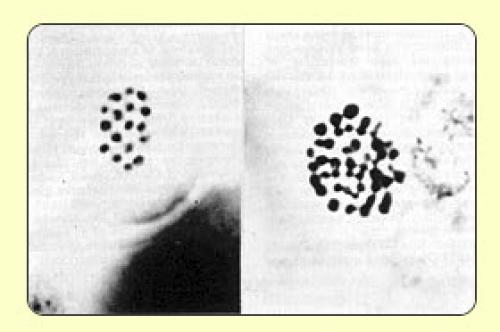
Chromosomes - left of E. waltheri (Moran 7695), right of E. chapalensis (Uhl 2140)
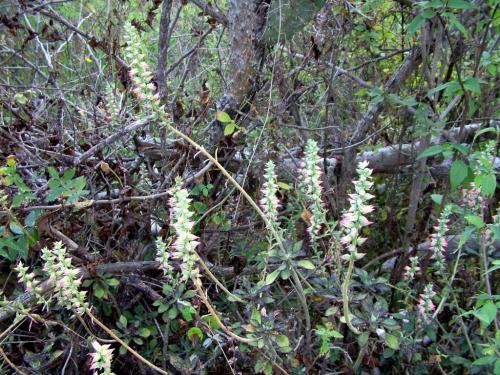
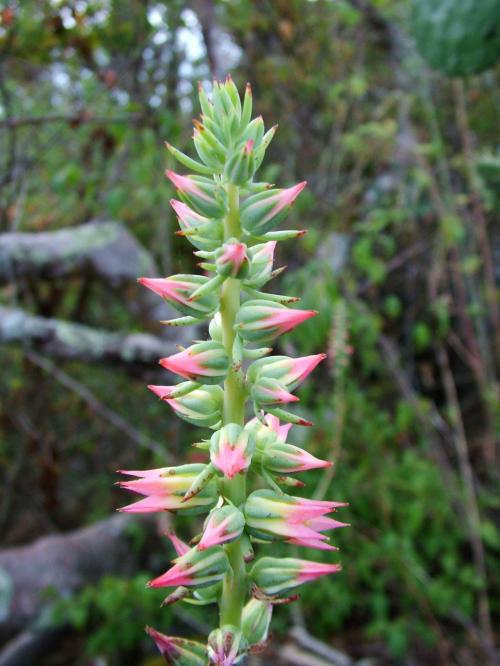
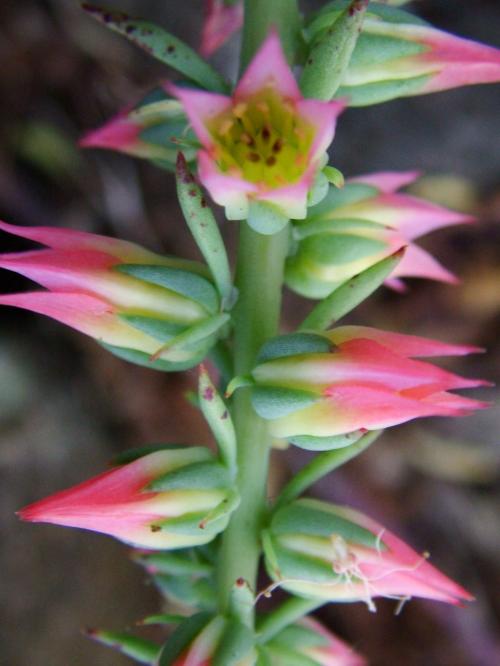
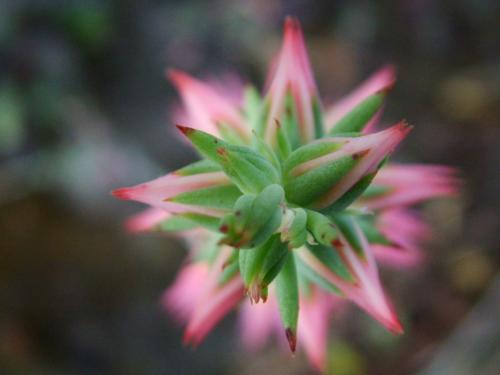
Photos Ignacio Garcia